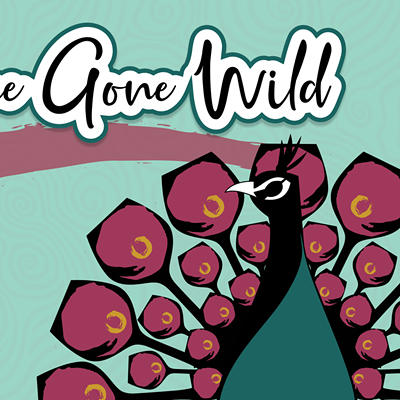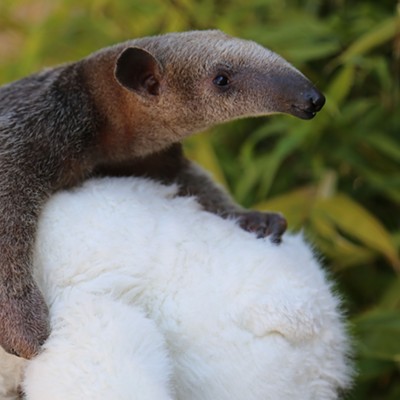If you missed it, on the evening of Aug. 31, full-time trainer and part-time inebriate David Blair spotted a handler or "cool out" carrying a dog from the track. After a visual inspection by a track veterinarian, the dog was diagnosed with a fractured lower back leg, or hock. Owner Kevin Mathieu, when contacted by cell phone, wanted the dog put down.
Blair objected; a fractured hock is one of the most common injuries in racers, non-life-threatening and easily mended if wrapped and rested. But Mathieu did not see it that way. Even though Blair had already called an adoption group, which was en route, when police hauled him away, the 2-year-old female called "Messy" was killed.
The subsequent hearing the following Tuesday was supposed to address Blair's alleged drunkenness. But when I arrived at TGP that night, it was obvious there was a lot more going on. The greyhound rescue community and animal-rights groups were up in arms. Dozens of protesters marched on the sidewalks outside. The hearing room, filled to capacity, overflowed into the hall with a crowd including local news outlets and reporters. Not because of Blair--he had simply sparked a smoldering powder keg--but because Tucson Greyhound Park has been asking for it for years.
Tucson Greyhound Park is anything but a transparent entity. Located in South Tucson, it looks like a smaller version of any horseracing track, the main building housing betting windows, vending machines and bars. The place has a beleaguered, run-down look like a casino, the best years of which are long gone.
Kennel owners are independent contractors, and some are responsible; others aren't. Predictably, this makes for inconsistent conditions for the dogs depending on the owners' priorities, since kennel space is limited.
As a result, kennels loathe housing noncompetitive dogs. They take up space that would otherwise be used for dogs that make money. In other words, it's simply not in the interests of individual kennels or Tucson Greyhound Park to house dogs that can't race. It wasn't that Messy's condition required euthanasia. It was simply that with a fractured hock, she was no longer an earner. Blair happened upon the scene and got in the way, effectively interrupting business as usual.
Yet, according to the Arizona Department of Racing, he only did what the track is supposed to do. State regulation R19-2-329 states: "Every effort shall be made to adopt greyhounds not used for racing or breeding." According to Blair, it's the "every effort" part that kennels use as a get-out. When filling out paperwork, they'll inevitably say they tried to contact someone, but were unsuccessful.
This renders the events of Aug. 31 particularly bizarre. Tom Taylor, the general manager of Tucson Greyhound Park, is also the president of the local chapter of Greyhound Pets of America, the so-called adoption arm of the greyhound-racing industry. He was there that night, as was track veterinarian Betty Menke and Arizona Department of Racing veterinarian Andrew Carlton. Why none of these people were aware of the regulations, and why Taylor didn't take the dog to "pet out," as per these same regulations, shall forever remain a mystery.
Unless, of course, you consider the fact that there are simply too many dogs. Thousands of dogs are bred throughout the country each year, and comparatively few have successful racing careers. While not legal in Arizona, some states allow surplus dogs to be euthanized at the owner's request.
Here, however, sometimes whole truckloads of them mysteriously disappear, as was the case in 2006 when 160, supposedly en route to adoption groups, went missing. Sometimes, as happened in the early '80s, hundreds wind up in animal-research facilities.
Greyhound racing's inherent cruelty resides not in its overt brutality, as in pit bull fighting, but in the shroud of secrecy that surrounds it.
When the Michael Vick horror show came to light, there was a lot of debate, often involving animal-rights groups, who while admitting that dog fighting is bad, argued that the inhumane treatment of livestock, for example, is equally bad. Certainly, mistreating any animal is unforgivable, but dogs are different. For whatever reason, dogs have thrown in their lot with us. There is no other animal, domestic or otherwise, that loves us the way they do. They keep us company when we're lonely and comfort us when we're sad. They help us if we're disabled, chase down crooks, protect our homes, and delight and trust us--all in the name of some mysterious connection we may never understand.
It's a betrayal of the highest order to throw greyhounds out like trash.






